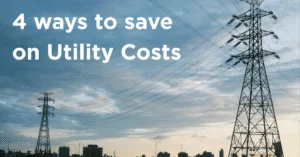The idea of buying land and building an investment property is appealing. You get a clean slate, you can build exactly what the market wants, and in theory, you end up with a brand-new asset that should perform well for years.
But theory and reality are not the same thing. Some investors succeed with this strategy, but just as many start down the road and never finish. Others complete the project only to find the numbers don’t work, leaving them with an expensive lesson instead of a profitable investment.
If you’re thinking about putting up your own investment property, here are three things you absolutely need to understand before you get started.
1. Know Your Costs in Detail
Guessing or ballparking costs is a mistake that can sink a project before it even starts. The numbers need to be precise, and they need to cover far more than just construction.
Start with land cost. Then add the obvious expenses like site work and building construction. That’s the part most investors expect. But don’t forget everything else that comes with preparing raw land. You’ll likely need surveys, wetland studies, stormwater plans, and a host of engineering reports. Each of those items comes with professional fees, and none of them are optional if you want approvals.
Then there are township or municipal costs. Permits, zoning reviews, and impact fees all add up. They often come due long before your project starts generating any income.
Construction costs themselves can also shift while you wait on approvals. If it takes a year or more to get the green light, material prices could rise, and labor rates may increase. Smart investors add a contingency buffer to cover those changes, so they aren’t left scrambling when the budget no longer matches reality.
In short, don’t stop your cost analysis at “land plus building.” Cover every item that will hit your bank account before you can lease space or collect rent.
2. Understand the Timing for Approvals
Even if your numbers are solid, timing can undo the entire project. Approvals rarely happen quickly, and while you’re waiting, you’re paying carry costs.
If you financed the land, your loan payments continue whether you’re building or not. Taxes, insurance, and other expenses don’t stop either. The longer the approval process drags on, the more you pay without any income to offset it.
That’s why you need a realistic timeline from raw land to finished building. Talk with engineers, contractors, and municipal staff about how long reviews typically take in your area. Some townships can move efficiently, while others are known for lengthy delays.
Build that timing into your budget. If you assume approvals will take six months but they really take twelve, you could double your carry costs. A project that looked profitable on paper can quickly slide into the red.
3. Gauge Market Demand and Lease-Up Periods
Let’s say you’ve nailed the budget and survived the approvals. You build the property, and it looks great. The real test comes next: can you lease it?
Market demand is the third piece of the puzzle, and it’s often underestimated. If you’re in a market with limited competition, leasing might be fast. A 24-unit apartment building could fill up in a matter of weeks if demand is strong. But if you’re in a market that’s already saturated, you might spend a year or more trying to stabilize occupancy.
That lease-up period matters because most construction loans don’t roll into permanent financing until the building is stabilized. Stabilization usually means a certain occupancy percentage at market rents for a set period of time. Until then, you’re stuck with a construction loan, which often carries higher interest and shorter terms.
If you haven’t planned for a long lease-up window, you may run out of time or money before you can refinance into a permanent loan. That’s when projects tip into distress, even if the building itself is well built.
Final Thoughts
Building an investment property can be rewarding, but it is not a shortcut to easy returns. Costs can escalate, approvals can drag on, and lease-ups can take longer than expected. The investors who succeed are the ones who plan for all three challenges before they ever close on the land.
Many clients we work with appreciate having clear-eyed guidance as they consider whether to build or buy. If you are exploring land or new development opportunities in Pennsylvania or Maryland, reach out to us. We are always glad to help you evaluate the numbers, timing, and demand so you can move forward with confidence.





